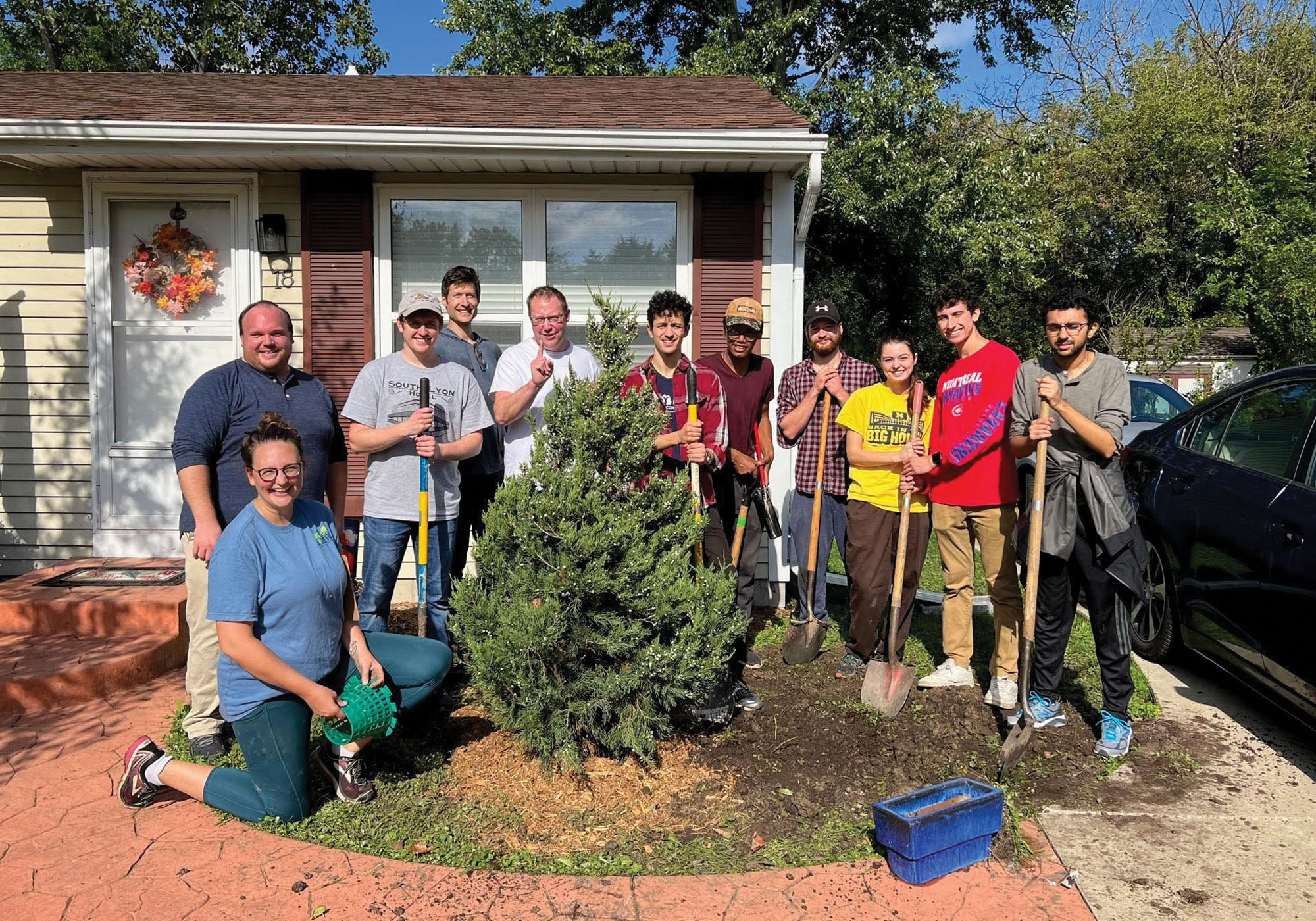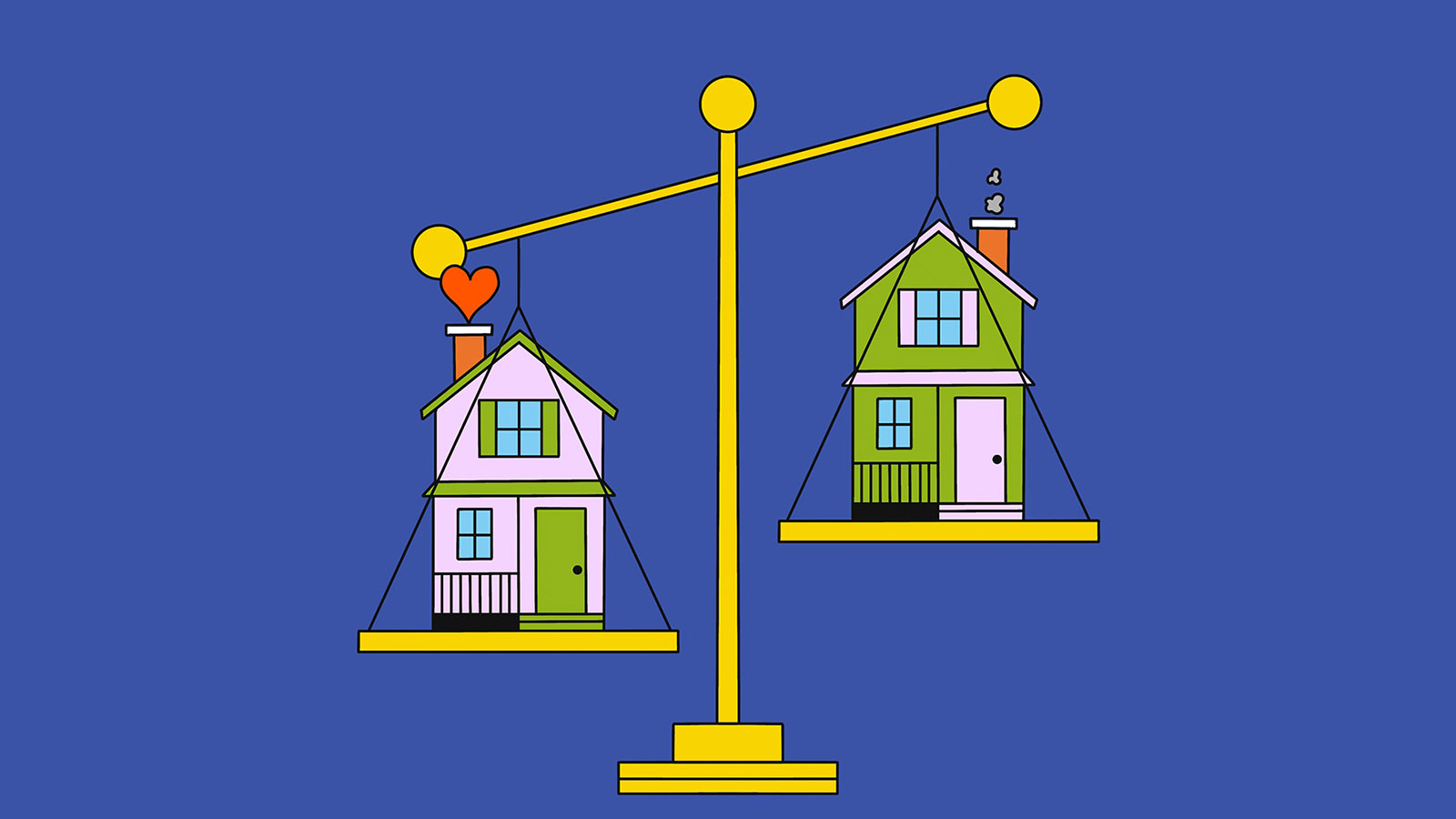This story is part of the Cities + Solutions series, which chronicles surprising and inspiring climate initiatives in communities across the U.S. through stories of cities leading the way. For more solutions stories like these, subscribe to the Looking Forward newsletter.
The neighborhood of Bryant sits in Ann Arbor, between the hills and valleys that surround this city in eastern Michigan. Its 262 homes are perched across from the city’s largest landfill and stand on a floodplain, so residents grapple with mold, mildew, and water damage. Outdated infrastructure subjects them to high utility costs, and Interstate 94 long ago isolated the community, one of the city’s most densely populated, prompting decades of neglect.
More than half of the people in this frontline community identify as people of color. About the same number are renters. Three in four families, many of whom have been in the neighborhood for three generations, live in poverty. The help that does come from the government is too often offered by bureaucrats with good intentions but little idea what residents want — or need.
“A lot of programs, specifically ones that are focused on energy conservation, just get designed and brought into these communities,” says Hank Love, director of municipal and community programs at the energy equity organization Elevate, which works in cities nationwide including Ann Arbor. “People would say, ‘Look at what we made for you and are going to implement,’ without getting adequate input on the front end.”
That dynamic began to change when Ann Arbor vowed to achieve carbon neutrality by 2030. The city is beginning in Bryant, where it has enlisted residents and nonprofits to help decarbonize the entire community. Renovations to the first homes began in May 2022, funded through a state grant to repair and electrify homes, plant trees, and install solar panels.
“We made a really strategic decision to focus on those who have been hurt first and worst by climate change and systemic racism.”
– Missy Stults
“It’s resident-designed and resident-centered,” says Missy Stults, the city’s sustainability director and a 2022 Grist 50 honoree. “We are trying to correct for market failures by working directly with a frontline community to determine how best to collaboratively create the nation’s first fully decarbonized low-income neighborhood. There’s a layering of so many elements, and it is literally changing lives.”
* * *
In 2020, Ann Arbor announced the A²Zero initiative, an audacious plan to achieve carbon neutrality citywide within a decade. City officials formed a broad coalition of nonprofits, for-profits, and community organizations to answer the question, “How do we make it happen in just 10 years?”
Stults saw an opportunity to engage the community in an effort to address the complex and intertwined issues of gentrification, disinvestment, and environmental racism. She and her team had been mapping socioeconomic vulnerability within the city, and “Bryant popped up for us as an area of opportunity,” she says. “We made a really strategic decision to focus on those who have been hurt first and worst by climate change and systemic racism. We thought, ‘Well, why don’t we try? Let’s go talk to the residents and see if this is of interest.’”
Although she found plenty of interest, she also found apprehension — many of Bryant’s residents had lived for generations under a legacy of institutional disregard and neglect. To earn their confidence, Stults and her colleagues knocked on doors to chat with residents about the program and gauge interest, and hosted community events like tree plantings.

“Our biggest obstacle was to gain that trust, to help people believe that we were actually trying to do something for them without taking from them,” says Krystal Steward, a Bryant resident and outreach specialist for Community Action Network. “And now, they’re seeing that things are actually happening. Because I’m their neighbor, there’s a greater sense of trust in the project. It’s an amazing feeling to be helping my community.”
* * *
In spring 2022, nearly two years of planning finally began to yield results. Through a $500,000 state grant to Community Action Network, decarbonization of the first 19 homes — selected through an energy assessment that considered the extent of needed repairs — began.
Every project begins with an energy assessment to determine how best to rehabilitate and retrofit each house. Most homes use gas to power furnaces and other appliances, making the transition to clean tech as much about increasing comfort as it is about reducing emissions, says Hank Love. There’s no point in, say, replacing a gas furnace if the roof has holes or the attic lacks insulation. “It’s going to feel cold no matter how much you heat it, and you’re going to spend a ton of money just trying to feel comfortable,” he says.
Once repairs are made, crews swap gas appliances for electric ones before installing solar panels. “What I’m most excited about is that we are already solarizing households in the neighborhood and essentially fixing affordability issues that some residents are having,” says Derrick Miller, executive director of Community Action Network.

Bryant resident Deborah Pulk, who lives on a fixed income and has been in Ann Arbor since 1986, was among the first to benefit from the program. She needed a new roof, and an inspection revealed that her stove was emitting dangerous amounts of carbon monoxide. The switch to electric appliances and renewable energy has saved her money, too.
“Krystal had told me that they were trying to start putting up solar panels,” she says. “I said, ‘Sure! I’d love to have solar panels on my house.’ My gas and [electricity] bill is already much lower. I used to pay $145 per month on a budget plan. Last month my bill was $39.”
As in any neighborhood, some people support the project, others are indifferent, and a few are opposed — because they remain leery of City Hall, question whether there will be enough money to continue the program, or don’t believe climate change is a problem. Stults concedes the city has not yet lined up additional funding, but notes, “We are making progress.” City officials are hopeful that the work done on the first 19 homes, and the lessons they’ve learned working with residents, homeowners, and landlords, will provide a blueprint for decarbonizing other neighborhoods and, perhaps, other cities.
“This project really lights me on fire and keeps me going — it’s so transformative for everyone who touches it,” says Stults. “It’s certainly transforming me. I hope that it actually transforms our system by creating new tools and mechanisms for everyone to be able to engage in the clean energy and decarbonization movement. If we don’t create space for everyone as a part of this movement, we will fail.”
Explore more Cities + Solutions:
- New Orleans lost its bike share. Residents stepped up to rebuild it with a focus on equity.
- A California town’s wastewater is helping it battle drought
- Can cities eliminate heat-related deaths in a warming world? Phoenix is trying.
- Pittsburgh’s secret climate weapon: municipal budgeting
- Lessons from the Flathead Reservation’s comprehensive climate plan



